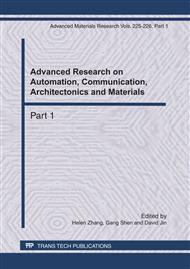p.469
p.475
p.479
p.483
p.488
p.492
p.496
p.500
p.504
Distributed Information Fusion Structure Based on Data Fusion Tree
Abstract:
A distributed information fusion structure based on data fusion tree is built to realize precise localization and efficient navigation for the mobile robot. The multi-class, multi-level information from robot and environment is fused using different algorithms in different levels, and make the robot have a deeper understanding to the whole environment. Experiments demonstrate that the new model proposed in the paper can improve the positioning precision of robot greatly, and the search efficiency and success rate are also better than traditional mode.
Info:
Periodical:
Pages:
488-491
Citation:
Online since:
April 2011
Authors:
Price:
Сopyright:
© 2011 Trans Tech Publications Ltd. All Rights Reserved
Share:
Citation:


